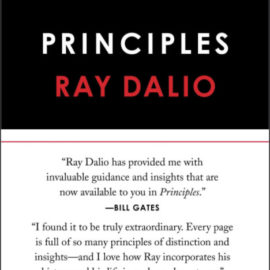
Earlier this year, Jeff Bezos (Amazon), Warren Buffett (Berkshire Hathaway), and Jamie Dimon (JP Morgan Chase) announced a joint venture to tackle healthcare costs. Recently, they named famed medical writer and surgeon Atul Gawande to be the venture’s first CEO.
Very few details about what the venture is actually doing have been announced, leading some to speculate. The more obvious low-hanging fruits are cutting out middlemen like pharmacy benefit managers (hence Amazon’s acquisition of PillPack) and getting some returns on scale by self-insuring a million employees across the 3 companies.
But I think a lot of speculators are missing the point. I predict ABC Health’s ultimate vision is to create a nationwide insurer that can service an entire nation’s employers and consumers. Much like how 64% of US households are Amazon Prime members, ABC Health hopes to build a payer system that the majority of US households will subscribe to.
Getting to that point is the challenge. Here I’ll describe what I see as the root problems of US healthcare costs, the central strategy that will get ABC Health to massive scale, and the exciting opportunities available to it.
Summary
Uncontrollable US healthcare costs have structural root causes in:
- provider consolidation leading to local monopoly power
- weak incentives for prevention and primary care
- inability of patients to make cost-effective decisions.
The Amazon-Berkshire-Chase (ABC or ABJ) Health organization will tackle this by accumulating the scale needed to enforce the catalysts of cost-effective care: outcomes data; best practices for cheaper, higher-quality care; and new payment models.
ABC will accumulate scale through a virtuous cycle of (cost-effective care) leading to (more patient/employer recruitment) leading to (more data, long-term care, and negotiating leverage) leading to (even more cost-effective care). It will begin with the employee base of its parent companies, then open the service to the public to grow its patient base.
Put another way: imagine the possibilities if 50% of the nation were on a single healthcare plan. That’s the goal of ABC
Root problems of US healthcare costs
- Consolidation of providers in local markets gives them large pricing and operational power. When there’s only one medical system in town, insurers, employers, and patients have to play by their rules.
- By the FTC’s standard metric for market concentration (Herfindahl-Hirschman Index), nearly half of hospital markets in the US are highly concentrated. No markets are considered highly competitive.
- Monopoly-provider markets show 15% higher prices and significantly lower quality care than more competitive markets.
- More insidiously, market power allows providers to resist changes for system improvement, such as publishing patient outcomes data, adopting new practices for more cost-effective care, making pricing transparent, and switching from fee-for-service to quality-driven/bundled structures.
- Weak incentives for primary care and prevention, despite large possible cost savings to the system.
- Through fee-for-service payments and higher compensation for acute procedures, providers are nudged away from preventative care. This has follow-on effects on the supply of doctors for different specialties (favoring dermatologists, discouraging PCPs).
- Insurers generally take a slice of the pie, so they don’t care much to stop the pie from growing. Higher costs can simply be passed on to employers and patients through higher premiums and copays.
- Theoretically, employers should incentivize better care today to save money tomorrow. But the nature of employment has changed – people switch jobs (and thus insurers) frequently, so there’s weak incentive to work for long-term patient health if the employer can’t capture part of that value. Similarly, insurers don’t have strong incentive to plan for long-term health, if their patients will leave their risk pool unpredictably.
- Inability of patients to make cost-effective decisions. This stems from:
- Information asymmetry – medicine is complex, and most patients can’t gain the education needed for fully informed decision making. Thus they bias toward opinions of providers (whose incentives may not be aligned with patient incentives)
- Lack of transparent pricing and lack of good quality data impede educated comparisons
- Lack of patient cost-sharing, which can cause moral hazard problems
- For some, the technological imperative, demanding the best and most expensive treatments regardless of efficacy
ABC Health’s High-Level Strategy
It’s clear that ABC’s ambition lies beyond servicing the needs of its parent companies’ employees. It aims to effect systemic change at a national scale.
Success in 20 years, then, might look like this: the majority of the nation’s population are members of ABC Health (through their employer or directly), much like a majority of US households are members of Amazon Prime. With this scale, ABC can not only bargain down costs, but have the negotiating leverage to transform how healthcare is practiced and paid for.
The scale directly addresses the root problems above:
- negotiating leverage neutralizes the consolidation of providers, making it easier to change their practices (such as data and pricing transparency, payment bundles)
- a single insurer representing the majority of employers increases the likelihood that an employee will keep the same insurer despite switching jobs. Investing in long-term health becomes more pragmatic.
- with more patient data and technology tools, patients can be guided to making complex healthcare decisions that are right for their preferences
How does ABC get from here to that immense scale? Its strategy is to create a virtuous cycle of using cost-effective care to attract more patients and employers (who seek low premiums and high quality care).
This increase in patient mass improves ABC’s capabilities: gathering more outcomes data, improving negotiating leverage. In turn this drives even more cost-effective care, which then drives even more patients onboard…

ABC will start with the 1 million employees of Amazon, Berkshire Hathaway, and JPMorgan Chase and build an internal healthcare program. To favor its chances of success, it may select especially for markets where employees represent a large portion of the local population, and the healthcare provider market is already competitive.
After experimentation and traction, it will open the program to the public, kicking off the virtuous cycle and gathering scale. How quickly the flywheel spins and accumulates mass depends on how quickly the tactics (described in the next section) can lead to cost savings.
This is classic Amazon strategy in two ways:
- Building a reliable internal service, then making it publicly available as a product (Fulfillment by Amazon, AWS, Mechanical Turk)
- Spinning the flywheel and accumulating scale. In retail, this is done with superior customer experience driving more customers, which drives sellers to add selection (which improves customer experience further), and which drives scale to pressure lower prices (which improves customer experience).
The Opportunities of Scale
Given sufficient scale, it’s low-hanging fruit to create pricing pressure and quality competition between providers. This itself can be a significant improvement.
But at this scale, there are large opportunities to transform how healthcare is practiced. These are themes of what can be done at scale:
Collecting outcomes data at scale, and discovering cost effectiveness
Like this summary? Want to learn more from books than ever? You'll love my product Shortform.
Shortform has the world’s best guides to 1000+ nonfiction books and articles. Even better, it helps you remember what you read, so you can make your life better. What's special about Shortform:
- The world's highest quality book guides - we discuss the book's main ideas, with expert analysis and commentary expanding will beyond the book
- Interactive exercises that teach you to apply what you've learned
- Discussion communities - get the best advice from other readers
Sound like what you've been looking for? Sign up for a 5-day free trial here.
- With scale, ABC can push providers to share outcomes data, in a standardized data stream, as a condition of accepting ABC’s patients.
- This enables an incredible set of opportunities to improve cost-effective care, each empowering the next like a set of dominoes:
- Find the outcome measures that best predict long-term health. Standardize the definitions of quality for different conditions across the industry. One barrier to adopting quality-based care is that people disagree on what quality even means. Using large datasets tying outcome metrics to patient well-being, ABC can set the conversation around what quality means.
- Publicize outcomes data across providers. Once the definitions of quality are agreed upon, providers can be compared and ranked on a bell curve.
- Once outcomes data are public, empower consumers to make their own choices based on their personal preferences (based on how much they care about certain outcomes, or other ratings of providers). Build technology tools to help with complicated decision making, understanding the consumer’s unique preferences and recommending their best treatment options.
- Find outliers of high quality care (like the cystic fibrosis outlier from The Bell Curve). Take those best practices, standardize them, then apply them everywhere feasible.
- Find areas of wasteful, low-yield care, and change the incentives to reduce it.
Long-term healthcare emphasizing prevention
- Currently, changing jobs often means changing insurance, so insurers have little incentive to promote long-term health.
- Instead, if most employers use ABC as an insurer, then an employee keeps a relationship with ABC even after switching jobs. ABC then has a strong incentive to promote prevention and primary care, since their patients will be following them over the long term.
- Financially, ABC might effect this through differently structured reimbursements to providers (e.g. rewards for stopping progression of disease), or through patient incentives.
- Technology tools to nudge patients toward healthy behavior change are also promising, benefiting from a larger userbase and more data.
- This drives the virtuous cycle above – as more patients’ long-term health is managed, costs across the system decrease, making ABC health cheaper, which drives even more patients and employers onboard, which enables long-term health even further since patients switch insurers even less.
Size allows shifts to value-based payment models
- Successful examples include Walmart and bundled surgeries at high-quality centers, or CalPERs and joint replacement. These were achieved largely because the organization’s scale allowed it to dictate the terms of service in ways that smaller employers cannot.
- At ABC’s ideal scale, this can be applied across the entire spectrum of care, for common procedures and diagnoses. It can even shift payments toward prevention and primary care, providing incentives for stopping progression of disease (eg pre-diabetes).
- A second-order effect is shifting the compensation to doctors across specialties, which in turn will change the supply of doctors for specialties (eg primary care becomes more rewarding).
Lower cost means more access
- At higher healthcare prices, utilization decreases. People who can’t afford current deductibles or co-pays choose not to receive care, costing the system more in the long term as unmanaged diseases worsen and complications arise.
- As the cost of healthcare lowers, access improves. People who can’t afford current care can start seeing doctors again.
- This kicks off its own virtuous cycle – lowering cost system-wide improves access, which improves the marginal person’s health when she starts consuming healthcare again, which reduces system-wide healthcare costs, which improves access for even more.
Mobilization of customers for policy changes
- Inevitably the ideal changes (reimbursement model changes, increasing local provider competition) will be countered in the political arena, likely in the name of patient safety.
- Uber received regulatory pressure around taxi medallions. In response, Uber successfully mobilized its customers, making clear a large portion of the voting population wanted Uber to stay.
- Similarly, at scale, and with a good product customers are happy with, ABC could be powerful in mobilizing patients to push for positive regulation in data transparency, cost-effective care, and anti-trust actions.
Create in-house competition in uncompetitive markets
- In uncompetitive areas where ABC’s scale is insufficient to cause change, ABC might create or sponsor new competition in healthcare services. This is especially powerful once ABC has operating data on how providers work.
- Analogously, Amazon is said to study the practices of merchants offering popular products at low prices. Then it replicates those practices at scale to undercut in price, or creates its private label goods.
- The real value might not be the value of the service itself, but the competitive pressure this provides once a local monopolist faces competition. (eg Google Fiber might not have succeeded as a sustainable product, but it significantly raised the bar of competing internet services where it was deployed). This action has high leverage, as even the threat of competition encourages good behavior.
The enabler of all these themes is using customer scale as the lever to effect the change. Many of these ideas have been generally accepted for years as Good Ideas – for instance, people have understood that shared outcomes data would be a great first step to understanding quality. But this has yet to be implemented, because providers haven’t had the incentive to actually enact the change, despite paying lip service to its importance.
At scale, ABC Health would represent a large portion of the patient/employer population in local markets. This provides the pressure to get providers and other insurers in line with implementing the tactics above. As these tactics lead to cost-savings, more patients/employers will join ABC Health, kicking off the virtuous cycle described above.
Risks
Inability to Overcome Monopolist Providers
As a large payer, ABC would have its patient population as negotiating leverage. But in uncompetitive markets where a single payer faces a single monopolist provider, the provider might still have the advantage, if the alternative for patients is to drive two hours away for care. Further, the local monopolist provider may also be the largest employer in the area, giving it strong political power. In this game of chicken, who flinches first?
At the beginning, this might be mitigated by finding areas where 1) ABC’s parent companies have a particularly high fraction of the population employed, 2) the provider side of the market is competitive. This is likely where change can happen fastest.
In more difficult monopolistic markets, ABC could offer in-house competition, as described above.
Parent Company Frictions
Amazon, Berkshire Hathaway, and JPMorgan Chase are largely owned by shareholders who may be indifferent about long-term improvements to national healthcare. If in the short term ABC struggles to get traction or jeopardizes company performance (eg through employee discontent), there might be an outcry from shareholders for the parent companies to go back to basics and drop their “distracting little project.”
Another scenario: if ABC works and successfully lowers healthcare costs for its parent companies, might shareholders resist sharing this competitive advantage with competitors? This would severely handicap ABC’s potential for impact.
Employee Discontent
Kicking off the virtuous cycle requires a critical mass of happy patients who will stick with ABC. But the parent companies employ a wide range of people, including highly-compensated employees with high expectations for care. If ABC’s work includes some loss in flexibility of care, will employees tolerate this? If employee discontent is high enough to cause company performance drops, shareholder concerns might override.
Offering employees choice between external insurance programs might mitigate the controversy – but it would also reduce the mass of patients represented, thus reducing negotiating leverage and slowing the virtuous cycle.
Continuing as Benevolent Dictator
In a good outcome, ABC would wield considerable power to push its terms and raising the barrier to entry for competition. In this privileged position, how would it continue its founding mission, rather than starting to rent-seek and becoming the type of organization it tried to make obsolete?






